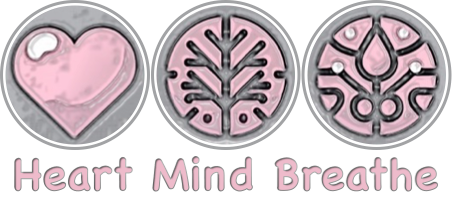I’m always on the lookout for podcasts that align with my values around embodiment, and different journeys of healing approached with depth and care. Last night, I listened to an ‘expert’ claim that mindfulness should be avoided in trauma work: encouraging people to stay present teaches the nervous system that the present isn’t safe, he claimed.
This once again frames mindfulness as just another option, in some wellness toolkit, showing limited understanding of its true nature and potential.
If you’ve ever been told that learning mindfulness doesn’t apply to your situation, especially because of the trauma you’ve lived through, I want to say this plainly:
That’s not true.
Mindfulness isn’t a neat little practice reserved for quiet minds or calm mornings. It’s for this: for grief, fear, exhaustion, and the kind of pain that doesn’t always have language.
Personal Story: Mindfulness in the Midst of Trauma
Five years ago, my parents both died within two weeks.
The lead-up to their deaths was a relentless combination of palliative care for my Dad alongside the upheaval of hospital and intensive care visits for my mum. It was a punishing regime marked by exhaustion, sadness, and a fear beyond words. My whole system didn’t settle during those years; it never had the chance. I was already carrying the weight of secret miscarriage, the disenfranchised grief of childlessness, relationship rejection due to my own physical condition, and early life trauma that had yet to surface in my awareness. (I have since learnt that old pain can only be released from the body proportionate to the amount of safety you feel internally.)
How could I have navigated this level of uncertainty and suffering without anything to hold onto?
The small seeds of understanding I had begun to cultivate in the years prior were all I had. Mindfulness wasn’t a practice I ‘chose’ in calm circumstances, it was the only thing truly available to me. The only thing big enough, wise enough, intelligent enough, loving enough to hold all that I came to it with, trauma included.
The idea that mindfulness forces us to ‘stay in the present’ at all costs is a misnomer of Titanic proportions, and it needs calling out.
Because an equal part of navigating presence is knowing when it’s too much to stay with, too much to bear.
Distraction as a Vital Component of Presence:
In contrast to the narrow view that mindfulness demands constant presence, we need to clarify what it really teaches: how to stay when it serves us, and how to step away when it doesn’t.
Because distraction, when done with full intentionality and awareness, is an entirely different thing. Instead of shutting out pain blindly, we recognise what is tolerable in a given moment and make a conscious choice to shift focus if necessary.
Not only that, but the kind of discernment which knows when presence serves and when it overwhelms, doesn’t come by accident. It requires training in presence itself, so we can recognise our limits not as failures, but as signals. When tuned into with full awareness these signals deepen our self-understanding, not just emotionally, but somatically, cognitively, and relationally.
Notwithstanding all the misconceptions, it was the training in presence itself which led me to a potential of peace I hadn’t known was possible. Through learning this practice intentionally, we tolerate more with greater ease: we actually can be with more than we could before.
In other words, being present doesn’t imply pain for the sake of pain.
Expanding Understanding of Mindfulness
You see, in trauma, reality is often fragmented, overwhelming, and deeply alive. Mindfulness, when taught with integrity, doesn’t ask us to bypass that. It meets us inside it, with choice, with nuance, with care.
To dismiss mindfulness outright in the face of trauma is to miss its depth and versatility as a practice that evolves with the person and the situation. It isn’t rigid: it’s fluid, adaptive, and built to meet the full complexity of life.
When mindfulness is stripped of its roots, reduced to a quick fix or productivity hack, we lose what it was always meant to be: a compassionate, discerning way of meeting reality as it is, not as we wish it to be. This is a sad consequence of the fact that so much of the original depth and nuance of these teachings has been shaved down to the extent that what we’re left with is a hollowed-out version, presented as lifestyle advice rather than a path of liberation.
So rather than rejecting mindfulness in the context of trauma, we need to reclaim it. Not as a tool of control, but as a practice of relationship, one that invites us to turn toward what’s here, and just as importantly, to turn away when presence would be too much.
That’s not avoidance. That’s wisdom.
And it’s time we made more room for this wholeness. The kind that doesn’t fracture under pressure, but softens around it, steadily, intelligently, and in service of healing.
To make whole, sweeping claims implying the appropriacy of mindfulness, we need a wholer understanding of what mindfulness is. Not a lifestyle edit. The whole practice: complex, compassionate, deeply relational.

